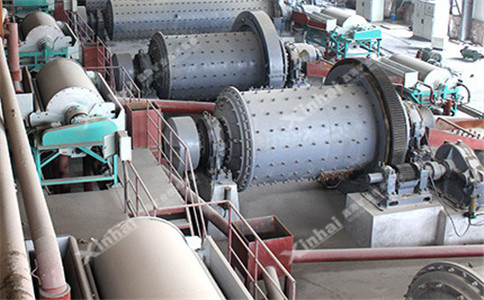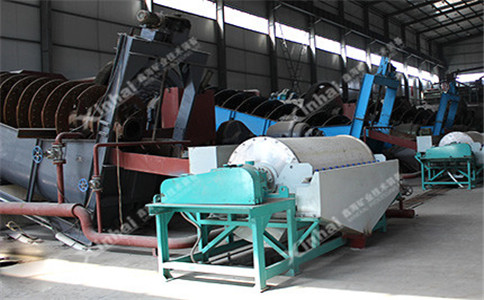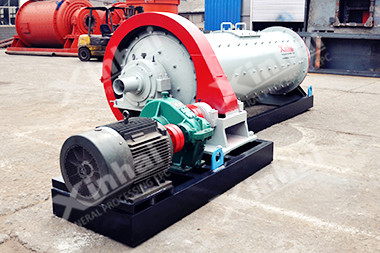- Home
- About
-
Mineral Processing EPC+M+O

Providing optimized solutions for your mine, one-stop service for mineral processing plant!
View details -
Product
- Grinding
- Classifying
Grinding & Classifying
- Flotation
- Gravity Separation Equipment
- Magnetic Equipment
- Gold Extraction Equipment
- Washing Equipment
Separating Process
- Thickening
- Dewatering Machine
Thickening & Dewatering
- Accessories
- Auxiliary Product
Consumables

Xinhai mineral processing equipment mainly include: grinding equipment, flotation equipment, dewatering equipment, magnetic separation equipment, and so on. Some of the equipment is Xinhai independent research and development, and has been awarded national patent. View details
-
Solutions
- Gold Tailings
- Tailings
Tailings

Gold CIP Production Line adsorbs gold from cyaniding pulp by active carbon including 7 steps: leaching pulp preparation, cyaniding leaching, carbon adsorption, gold loaded carbon desorption, pregnant solution electrodeposit, carbon acid regeneration, leaching pulp. View details
- Case
-
News
- Contact
Manganese Ore Processing Methods and Equipment
2025-03-27 XinHai Views (226)Manganese ore is an important raw material for steel manufacturing, but there are few types of manganese ore with extraction value, so it is important to rationally process manganese ore, improve the recovery rate of manganese ore and reduce the tailings content. This guide examines proven processing techniques and equipment through the lens of mineral engineering expertise.
Manganese Ore Processing Methods and Equipment
Mining and Pre-Treatment of Manganese Ore
Extraction methods (open-pit or underground) depend on deposit geometry and depth. Post-mining, raw ore undergoes preparatory steps:
Washing: Removes clay and fines that hinder downstream processing.
Crushing/Screening: Multi-stage circuits (jaw → cone crushers) reduce ore to optimal liberation sizes. Vibrating screens segregate particles, preventing overgrinding.
Sampling/Blending: Ensures consistent feed quality via automated sampling and controlled stockpiling.

Core Beneficiation Strategies
Selection hinges on ore mineralogy, liberation characteristics, and gangue composition.
1. Gravity Concentration
Exploits density differences between manganese oxides/carbonates (3.3–4.5 g/cm³) and silicate gangue (2.6–2.7 g/cm³).
Equipment:
Jigs: Process 0.5–15 mm particles (e.g., trapezoidal jigs for coarse ore).
Spirals: Handle 0.075–5 mm fractions.
Shaking Tables: Target fines (0.04–3 mm).
Advantage: Cost-effective for coarse particle recovery, minimizing downstream grinding.
2. Magnetic Separation
Leverages weak paramagnetism in manganese minerals (susceptibility: ~100×10⁻⁶ cm³/g).
High-Intensity Roll Separators:
Carbonate ores: >480 kA/m fields.
Oxide ores: >960 kA/m fields.
Synergy: Often paired with gravity methods for carbonate ores to reject non-magnetic silicates.
3. Froth Flotation
Critical for fine-grained (<75 µm) or complex ores (e.g., rhodochrosite, Mn-oxide slimes).
Anionic Reverse Flotation:
Activators: Sodium silicate disperses slimes.
Collectors: Fatty acids (e.g., oleic acid) float carbonate gangue from manganese oxides.
Challenges: High reagent costs; typically combined with pre-concentration stages.
4. Pyrometallurgical Upgrading (Manganese-Rich Slag)
Addresses refractory ores with high P/Fe via selective reduction in blast/electric furnaces:
Process: MnO₂ → MnO (reduction at 950–1100°C), yielding slag with 35–45% Mn, <0.03% P.
Output: Ideal feedstock for ferroalloy production.
5. Hydrometallurgical Extraction
Reserved for low-grade/complex ores:
Acid Leaching (H₂SO₄): Dissolves Mn, followed by Fe/Al precipitation via pH adjustment.
Electrowinning: Produces 99.7% pure Mn from purified MnSO₄ electrolytes.

High-Purity Manganese Production
Electrolytic Manganese Metal (EMM):
Leaching: MnCO₃ + H₂SO₄ → MnSO₄ + CO₂↑ + H₂O.
Purification:
Oxidation: H₂O₂ oxidizes Fe²⁺ → Fe³⁺.
Neutralization: NH₃ precipitates Fe/Al hydroxides.
Sulfide Treatment: (NH₄)₂S removes Cu/Pb/Zn.
Electrolysis: Mn²⁺ + 2e⁻ → Mn⁰ (cathode: 99.8% purity).
Ferromanganese (FeMn) / Silicomanganese (SiMn):
FeMn: Submerged arc furnace (SAF) smelting of Mn ore + coke + Fe scrap (78–82% Mn).
SiMn: SAF processing of Mn ore + quartz + reductant (65–68% Mn, 16–20% Si).
Plant Design Considerations
A 300 TPD facility might integrate:
Comminution: Jaw crusher → Cone crusher → Ball mill.
Classification: Spiral classifiers → Hydrocyclones.
Separation: HGMS (high-gradient magnetic separators), Jameson cells, dewatering screens.
Water Management: Closed-loop thickener circuits minimize freshwater intake.
Economic & Sustainability Metrics
Recovery Rates: Gravity circuits achieve 55–65% Mn recovery; integrated flowsheets (gravity + magnetic + flotation) reach 75–85%.
Environmental Innovations:
Dry stacking of tailings reduces water consumption.
Slag valorization in cement production.
Bioleaching R&D for low-energy processing.
Market Specifications & Challenges
Typical Grades: Metallurgical ores >44% Mn; chemical grades >80% MnO₂.
Impurity Limits: Fe <5%, SiO₂ <10%, P <0.2%.
Key Hurdles: Processing fine-grained ores, reducing energy intensity, and meeting stringent emission standards.
Manganese beneficiation demands tailored approaches based on deposit geology and market needs. While gravity and magnetic methods dominate, hybrid circuits increasingly combine physical separation with hydrometallurgy for complex ores. Advances in sensor-based sorting and reagent chemistry promise enhanced recoveries, particularly for marginal resources. As decarbonization drives demand for high-grade Mn in batteries and alloys, sustainable processing innovations will define the sector’s future.
What machines are used in lithium processing?
Unlock the secrets behind lithium ore processing! From powerful jaw crushers to precision flotation cells, discover the advanced machinery that transforms raw spodumene into high-purity lithium—fueling the EV revolution and renewable energy storage. Explore cutting-edge innovations that maximize efficiency, reduce waste, and meet the rising global demand for lithium.... [more]
Efficient Chrome Ore Gravity Processing Plants: Cost-Effective Solutions for Mineral Recovery
Discover advanced chrome ore gravity processing plants designed for high recovery rates and low operational costs. Learn about key technologies, benefits, and setup tips for optimal mineral extraction ... [more]
Related Article
- What are the Technologies for Lithium Production
- Gold Heap Leaching Summery
- How Hard Rock Lithium Processing Works: Mine to Market
- Global Mining Industry Analysis: Trends, Challenges, and Opportunities in 2025
- Phosphate Ore Processing and Beneficiation Plant Design: A Comprehensive Engineering Approach
- Titanium Ore Beneficiation: Navigating Global Supply Shifts with Advanced Processing Solutions
- Lithium Ore Processing Methods: Efficient Extraction Techniques for Battery-Grade Lithium
- Improving Graphite Ore Processing for Efficiency and Purification
- Chrome/Chromite mining company in South Africa
- Efficient Chrome Ore Gravity Processing Plants: Cost-Effective Solutions for Mineral Recovery
Mineral Processing EPC
Solutions
CONTACT US
- Tel: 0086 15901320633
- Fax: 0086 10 59621207
- Email: mhxu@xinhaimining.net
© 2017 Shandong Xinhai Mining Technology & Equipment Inc. Technical Support: Beijing Xinhulian Technology Co., Ltd.
Factory Address: No. 188, Xinhai Street, Fushan high-tech industrial development district, Yantai, Shandong, China






